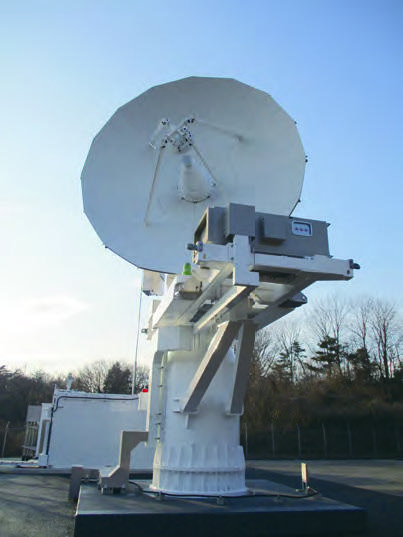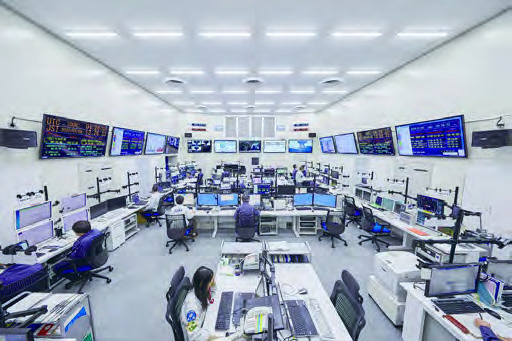Space Tracking and Communications Center
Development of a New Antenna and Receiver
Entering an Era of Gigabit Data Transmission in Space

"Tracking and control" refers to verifying the orbits of launched spacecraft (satellites and space probes), transmitting and receiving data, and monitoring and controlling spacecraft. At JAXA, the Space Tracking and Communications Center (STCC) plays a central role in conducting tracking and control operations. Based in the Tsukuba Space Center, the STCC contributes to the successful completion of a wide variety of spacecraft missions by undertaking system development and operation as well as research and development. Currently, the STCC is pursuing the development of a new ground station designed for the operation of next-generation Earth observation satellites.
A ground station is equipped with an antenna and its accompanying transmitter-receiver. In track and control communication, a ground station first receives signals from a spacecraft (e.g., positions, conditions, observation data) via parabolic antennas located in and outside Japan and transmits them to the tracking and control room in the Tracking and Control Building, where the data is used for orbit analysis, among other things. If needed, data is transmitted to the spacecraft to send commands via the antenna. In the past, receiver systems using S-band (2 GHz) or X-band (8 GHz) frequency were employed to receive signals from spacecraft. In recent years, however, the advancement of Earth observation missions led to increases in the speed and volume of data transmission, giving rise to a need for a Ka-band (26 GHz) receiver system capable of transmitting large volumes of observation data at high speed. The transmission speed of a Ka-band receiver system is approximately five times that of an X-band receiver system. As a way of illustration, a Ka-band receiver system is able to send a 50-GB data—a rough equivalent of data contained in a single Blu-ray disc—in about 100 seconds. This ground-breaking initiative truly brings "gigabit data transmission" to space.

which remotely controls the ground stations in and outside Japan and beyond 24 hours a day, 365 days a year.
A distinguishing feature of the newly developed ground station is that, of all the ground stations operated by the Center, it is capable of sending the largest amount of data in a single transmission and uses the smallest antenna to do so. The receiver is kept inside a container-type shelter. This specification facilitates transportation and makes it possible to assemble and calibrate the system in about two days. The design makes it easier to relocate the system in case of a natural disaster or to add to or expand the system. "We spent a long time fine-tuning the test parameters and verifying the test data during development testing and performed checks until all questions were answered," says SHIRAKURA Masashi, Associate Senior Researcher at the Center, looking back.
The new ground station will be installed at the Earth Observation Center (EOC) in Saitama Prefecture and at the Tsukuba Space Center. "We have completed installing the antenna at the EOC, and going forward we plan to conduct validation testing, including software operation verification for the entire system," says MIYATANI Shin, Researcher, on the progress achieved. The ground station is expected to be first used to verify the functions of Advanced Land Observing Satellite-3 (ALOS-3) immediately after its launch, which is scheduled for FY2020. At the Tsukuba Space Center, the ground station is scheduled to be installed in April or later.
With its enhanced performance including higher resolution and wider swath, ALOS-3 is expected to serve as a vital part of social infrastructure dedicated to Earth observation. "The Ka-band receiver system draws out the full potential of ALOS-3," says SHIRAKURA.
He continues: "The receiver is capable of quickly and reliably receive large volumes of observation data from satellites. Such data will no doubt play an important role in conservation efforts and disaster initiatives and help protect our livelihood. I'm sure the ground station will have broad application going forward."
Profile

|
|
|---|

|
|
|---|
All the images are copyrighted ©JAXA unless otherwise noticed.
- Home>
- Global Activity>
- Public Relations>
- JAXA’s>
- JAXA's No.80>
- Development of a New Antenna and Receiver Entering an Era of Gigabit Data Transmission in Space